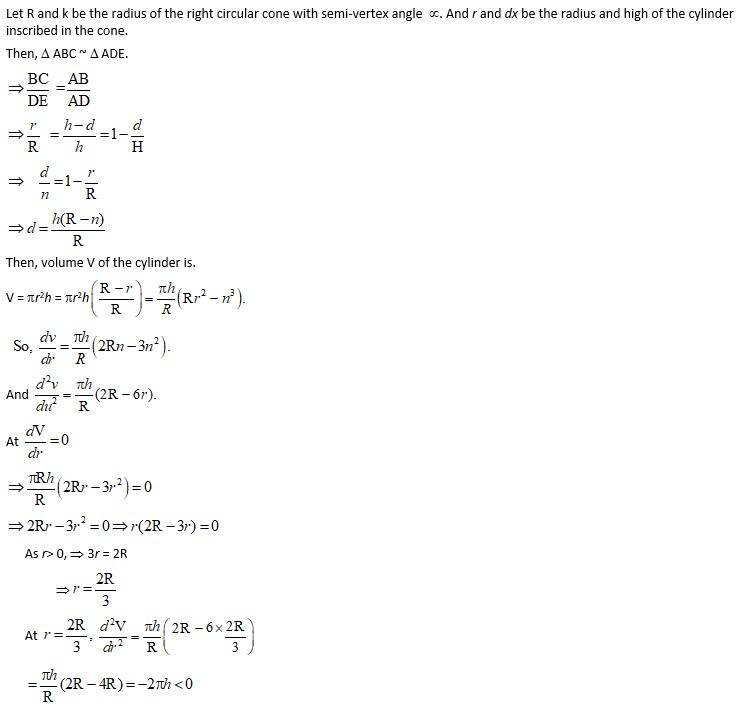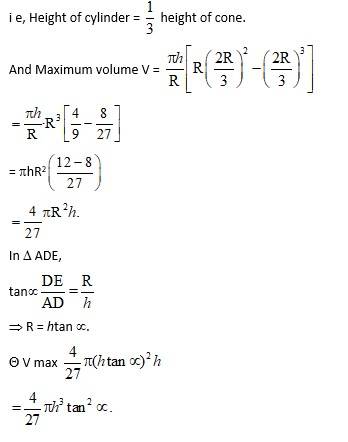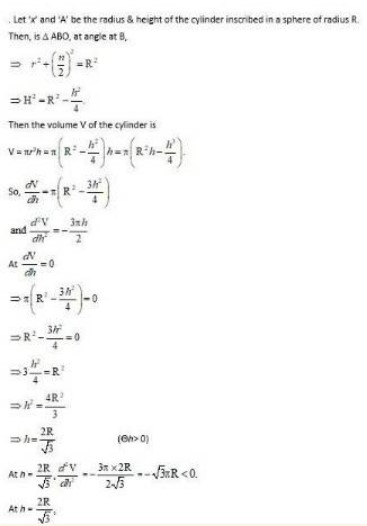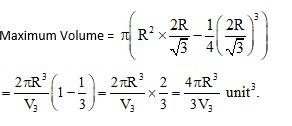Ncert Solutions Maths class 12th
Get insights from 2.5k questions on Ncert Solutions Maths class 12th, answered by students, alumni, and experts. You may also ask and answer any question you like about Ncert Solutions Maths class 12th
Follow Ask QuestionQuestions
Discussions
Active Users
Followers
New answer posted
4 months agoContributor-Level 10
The equation of the given curve is .
Differentiate with respect to x, we have:
The slope of the normal to the given curve at point (1,1) is
Hence, the equation of the normal to the given curve at (1,1) is given as:
Therefore, option (B) is correct.
New answer posted
4 months agoContributor-Level 10
The equation of the tangent to the given curve is
Now, substituting in we get:
Since a tangent touches the curve at one point, the roots of equation (i) must be equal.
Therefore, we have:
Discriminant = 0
Hence, the required value of m is 1.
Therefore, option (A) is correct.
New answer posted
4 months agoContributor-Level 10
Let x be the depth of the wheat inside the cylindrical tank is with radius = 10 cm
Then, Volume V of the cylindrical tank is
V = π (10)2x = 100πpx m3
As
i e, rate of increasing of depth
option (A) is correct
New answer posted
4 months agoContributor-Level 10
We have,
f (x) defined on [a, b]
And f (x) > 0 ∀ x ∈ [a, b].
Let x1, x2 ∈ [a, b] and x2>x1
In the internal x1, x2], f (x) will also be continuous and differentiable.
Hence by mean value theorem, there exist c [x1, x2] such that
f (x) > 0 ∀ x ∈ [a, b].
Then, f (c) > 0.
i.e., f (x2) -f (x1) > 0
f (x2) >f (x1).
Hence, the function f (x) is always increasing on [a, b]
New answer posted
4 months agoContributor-Level 10
Let x be the radius of the sphere ad x be radius of the right circular cone.
Let height of cone = y
Then, in ΔOBA,
(y-r)2 + x2 = r2
y2 + r2- 2ry + x2 = r2
x2=2ry - y2
So, the volume V of the cone is
So,
And
At
4x -y- 3y2 = 0
asy> 0.
At y = =
Ø V is maximum when y =
New answer posted
4 months agoContributor-Level 10
We have,
f (x) = cos2x + sin x, x∈ [0, π ].
So, f (x) = 2 cos x ( -sin x) + cos x = cos x (1 - 2 sin x).
At f (x) = 0
cosx (1 - 2 sin x) = 0
cosx = 0 or 1 - 2 sin x = 0
cosx = cos or sin x = = sin = sin
x= , x = and x = [0, π ].
So, f = cos2 + sin = 1.
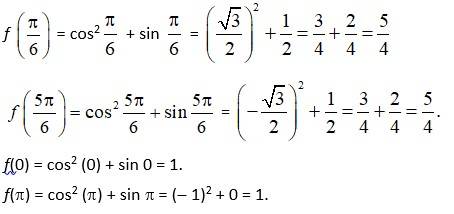
Absolute minimum of f (x) = and absolute minimum of f (x) = 1.
New answer posted
4 months agoContributor-Level 10
We have,
f (x) = (x- 2)4 (x + 1)3.
So, f (x) = (x- 2)4. 3 (x + 1)2 + (x + 1)3. 4 (x- 2)3.
= (x- 2)3 [x + 1)2 [3 (x- 2) + 4 (x + 1)]
= (x- 2)3 (x + 1)2 (3x- 6 + 4x + 4)
= (x- 2)3 (x + 1)2 (7x- 2).
At f (x) = 0.
(x- 2)3 (x + 1)2. (7x- 2) = 0.
x = 2, x = -1 or x =
As (x + 1)2> 0, we shave evaluate for the remaining factor.
At x = 2,
When x< 2, f (x) = ( -ve) (+ ve) (+ ve) = ( -ve) < 0.
When x> 2, f (x) = (+ ve) (+ ve) (+ ve) = (+ ve) > 0.
Øf (x) change from ( -ve) to (+ ve) as x increases
So, x = 2 is a point of local minima
At x = -1.
When x< -1, f (x) = ( -ve) (+ ve) ( -ve) =, ve > 0.
When x> -1, f (x) = ( -ve) (+ ve) (+ ve) =∉, ve > 0.
So, f (x) does not change through x -1.
Hence, x = -1 is a point of infixion
At x =
When x< f (x)
New answer posted
4 months agoContributor-Level 10
Let P be the point on hypotenuse of a triangle. ABC, t angle at B.
Which is at distance a& b from the sides of the triangle.
Let < BAC = < MPC = .
Then, in… ΔANP,
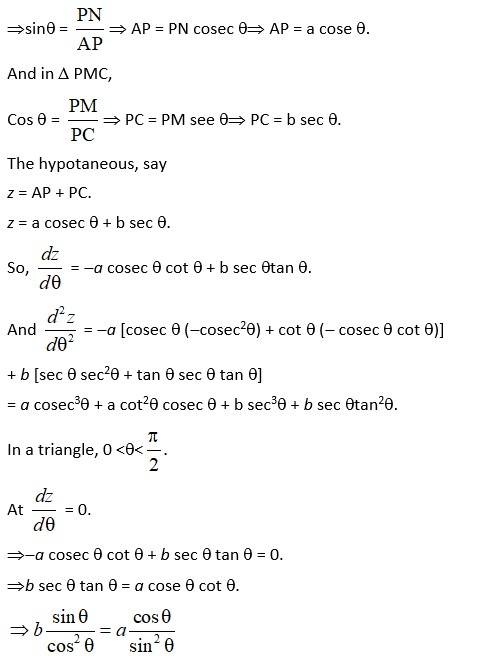
At tan Ø =
{ Øall trigonometric fxn are + ve in Ist quadrant}.
So, z is least for tanØ =
As, Sec2Ø = 1 + tan2Ø = 1 + =
secØ = =
And tan2Ø =
cot2Ø =
And cosec2Ø = 1 + cot2Ø = 1 + =
cosecØ =
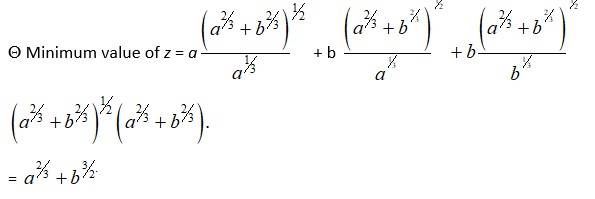
Taking an Exam? Selecting a College?
Get authentic answers from experts, students and alumni that you won't find anywhere else
Sign Up on ShikshaOn Shiksha, get access to
- 65k Colleges
- 1.2k Exams
- 687k Reviews
- 1800k Answers

